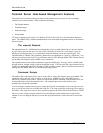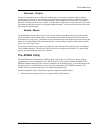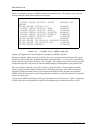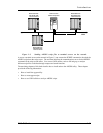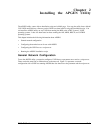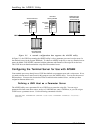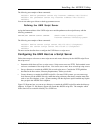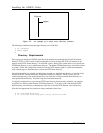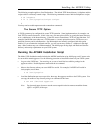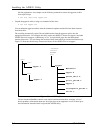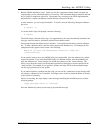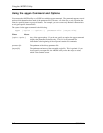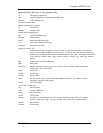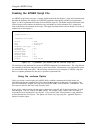
Installing the APGEN Utility
893-769-A 2 -5
The following example applies to Sun Workstations. The default TFTP home directory is /tftpboot and the
scripts reside in a directory named scripts. The following commands create a link from /tftpboot to scripts:
% cd /tftpboot
% ln -s /usr/synoptics/scripts scripts
#
You may need to enable superuser mode to enter these commands.
The Secure TFTP Option
A UNIX system may be configured for secure TFTP operation. Some implementations, for example, can
limit TFTP to certain directories. If this is the case, you must place all files in a particular home directory,
or in a subdirectory of the home directory. If the files are not located there, TFTP will not find them. For
example, SunOS and some others use a TFTP daemon -s (secure) option that restricts TFTP access to a
particular directory and its subdirectories. Sun Workstations are normally configured with this option
enabled. If you examine the /etc/inetd.conf file, you will see an entry similar to -s /tftpboot in the tftpd
entry. Other vendors may use a different method. The MAN pages on tftp, tftpd, and inetd.conf describe
directory and security requirements on your UNIX system.
Running the APGEN Installation Script
The Model 3395 distribution media includes the APGEN installation script, MAN page, and C source code
in a tar archive named apgen.tar. Use the following procedure to install these items on your UNIX system:
• Log on to the UNIX host. You must log on as root to install the host utilities package in the
apgen.tar archive. Enable Superuser mode with the su command.
• Move to the directory where you want APGEN to reside. For example, if APGEN will reside in
/usr/synoptics, move there:
% cd /usr/synoptics
• Load the distribution tape onto a tape drive, then copy the apgen.tar archive to the UNIX system. You
can copy the archive to any directory using a tar command of this form:
% tar xvf /dev/rst8 apgen.tar
Note: For nine-track tapes, be sure to use the correct tape-drive-device-name to match the format
(QIC11 or QIC24) of the tape.



